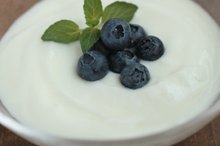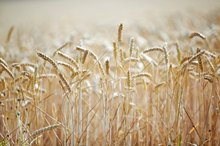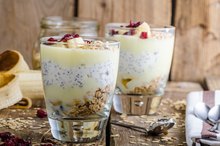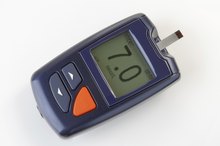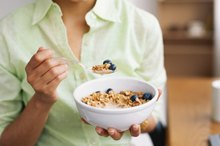Sugar Content in Brown Rice Vs. Wheat Bread
The U.S. Department of Agriculture's minimum daily recommended consumption of grain for adults is 6 to 8 ounces with at least 3 to 4 ounces coming from whole grains. Whole grains provide important nutrients and reduce the risk of many ailments, including heart disease, diabetes and cancer. However, simply because a product is labeled "brown" or "wheat," it doesn't mean it uses the whole grain or that other, less healthy ingredients such as sugar haven't been added. To get the most out of grains such as rice and bread, you need to ensure you're eating the whole grain with few other additives.
Whole Grains
For many years, grains and cereals have been given a bad rap because they're made up of carbohydrates. However, a healthy diet requires carbs to fuel the body. What the body doesn't need is the refined carbs found in white bread and rice. During the refining process, the most nutritious parts of the grain are removed. Brown rice is unrefined with its whole-grain goodness; however, breads marked "wheat" may not be using the whole grain. Instead, you need to choose bread marked "whole grain" or "whole wheat" to ensure you're getting unrefined bread.
Sugar
Brummel & Brown Nutrition Information
Learn More
Sugar occurs naturally in whole grains, so it can't be completely avoided. However, many manufactures add sugar, particularly to bread. The USDA reports that sugar is the No. 1 additive in food products. While sugar improves taste, it also increases the risk of tooth decay, heart disease, diabetes and obesity. The American Heart Association recommends that women eat only 100 calories of sugar a day. Men can have 150 calories. At four calories a gram, that is only 25 to 37 grams a day. To avoid unwanted, added sugars, read food labels, even on healthy foods such as wheat bread.
Sugar in Brown Rice
Brown rice has .35 to .85 grams of naturally occurring sugar, according to the USDA. No additional sugar is added, which makes brown rice a healthy, low-sugar choice of whole grains. Brown rice is also low in fat and has more than 4 grams of protein. Plus, it has many vitamins and minerals that include the B vitamins, which promote blood health; vitamin E, which has antioxidant properties; and potassium, which is essential to maintaining a healthy heart, kidneys and other organs.
Sugar in Wheat Bread
Is Sucanat Healthy?
Learn More
Wheat bread has a total of 4.49 grams of sugar, 4.1 of which is added, according to the UDSA. Whole-wheat bread offers whole-grain goodness, but has 5.57 grams of sugar, 5.0 of which is added. Nevertheless, the amount of sugar in wheat bread varies from brands and types. For example, some brands offer a low-sugar option. Read bread labels to find the brand and types that have the lowest amount of sugar per serving.
Related Articles
References
Writer Bio
Leslie Truex has been telecommuting and freelancing since 1994. She wrote the "The Work-At-Home Success Bible" and is a career/business and writing instructor at Piedmont Virginia Community College. Truex has a Bachelor of Arts in psychology from Willamette University and a Master of Social Work from California State University-Sacramento. She has been an Aerobics and Fitness Association of America certified fitness instructor since 2001.


